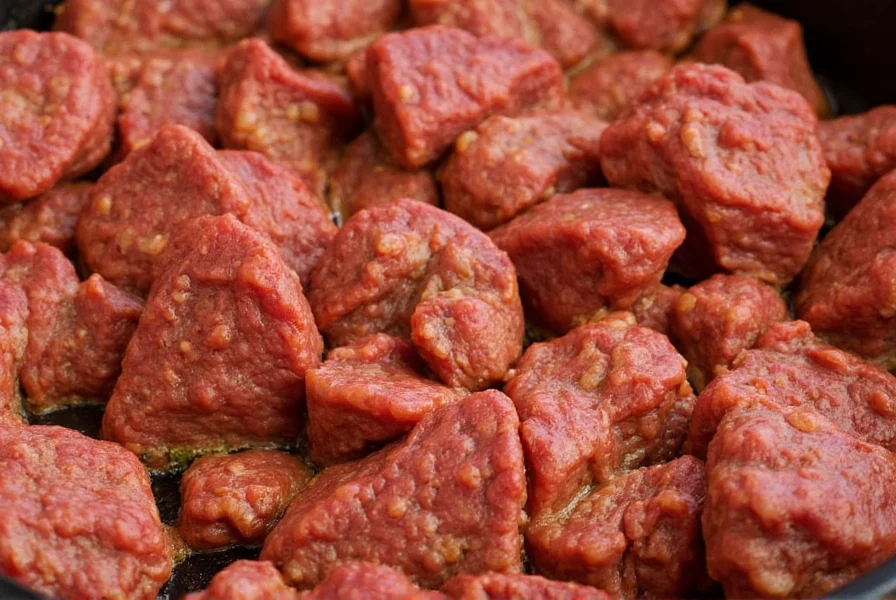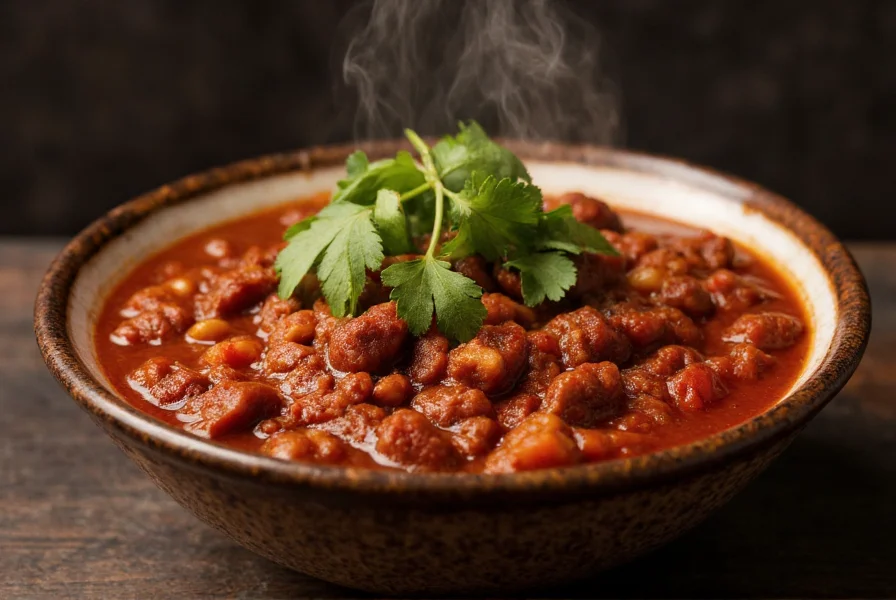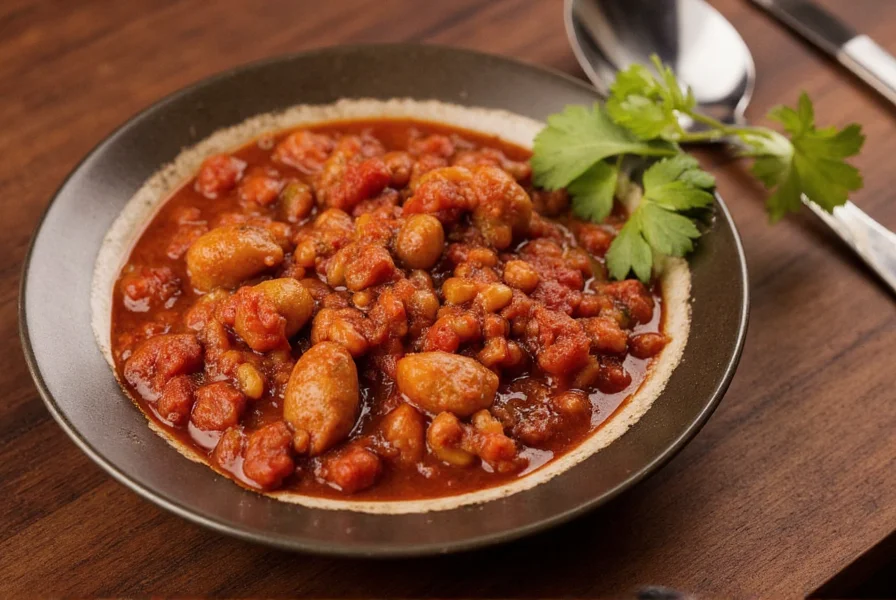When searching for the best chili, home cooks need more than just a recipe—they require understanding of what makes chili exceptional. This comprehensive guide reveals the essential elements that transform ordinary chili into something extraordinary, drawing from traditional techniques and regional variations across America.
Defining Great Chili: Beyond the Basic Recipe
Many people mistakenly believe chili's quality depends solely on heat level. True best homemade chili recipe considerations involve multiple factors working in harmony. The foundation of exceptional chili starts with meat selection—typically chuck roast or brisket, which contain enough fat to remain tender during long cooking. Lean meats often result in dry, stringy texture that no amount of liquid can rescue.
Spice balance separates good chili from great chili. The ideal blend creates complexity without overwhelming heat. Traditional chili makers use a combination of dried chilies (ancho, guajillo, pasilla) rather than relying solely on chili powder. Toasting whole dried chilies before grinding releases essential oils that bottled spices lack, creating deeper flavor profiles for your authentic chili without beans.
| Regional Style | Key Characteristics | Signature Ingredients |
|---|---|---|
| Texas Red | Meat-forward, no beans | Beef, ancho chilies, cumin |
| Cincinnati | Sweet-spicy with unique toppings | Spaghetti, chocolate, oyster crackers |
| New Mexico | Green chili focus | Hatch green chilies, pork |
| Midwest | Bean-inclusive, tomato-based | Kidney beans, tomatoes, kidney beans |
Essential Ingredients for Authentic Flavor
Creating the best chili ingredients list requires understanding each component's role. While recipes vary, certain elements consistently appear in championship-winning chili:
- Fresh dried chilies - Not chili powder alone. Ancho provides fruitiness, guajillo adds medium heat, and chipotle contributes smokiness
- Proper searing technique - Browning meat in batches creates fond (browned bits) that forms flavor foundation
- Acid component - A splash of vinegar or fresh lime juice brightens rich flavors
- Thickening method - Traditional chili uses masa harina rather than flour or cornstarch
Many home cooks make the mistake of adding liquid too early. For optimal chili cooking techniques, allow meat to develop a proper crust before adding any liquid. This Maillard reaction creates complex flavor compounds that simmering alone cannot achieve.

Perfecting Your Technique: Slow Cooking Secrets
The slow cooker chili tips that professionals use might surprise you. While convenience appeals, traditional stovetop or Dutch oven preparation yields superior results. The key is maintaining a gentle simmer—bubbles should barely break the surface. Boiling causes meat fibers to tighten, resulting in toughness.
Timing matters significantly in how to make authentic chili. Most recipes require minimum 3-4 hours of simmering, but 8-12 hours produces dramatically better results. During this time, collagen breaks down into gelatin, creating that signature rich mouthfeel. If using a slow cooker, set it to low and resist the urge to lift the lid frequently—each peek loses valuable heat and extends cooking time.
The Ultimate Homemade Chili Recipe
This refined recipe incorporates techniques from champion chili cooks while remaining accessible for home preparation. It follows traditional Texas-style preparation but includes notes for regional variations.
Ingredients
- 3 lbs beef chuck roast, cut into 1-inch cubes
- 2 ancho chilies, stems and seeds removed
- 2 guajillo chilies, stems and seeds removed
- 1 pasilla chili, stems and seeds removed
- 6 cloves garlic, minced
- 2 tbsp cumin seeds, toasted and ground
- 1 tbsp Mexican oregano
- 2 cups rich beef stock
- 2 oz dark chocolate (70% cacao)
- 2 tbsp masa harina
- Salt to taste
Method
- Toast dried chilies in dry skillet over medium heat for 30 seconds per side until fragrant but not burnt
- Soak toasted chilies in hot water for 20 minutes, then blend into smooth paste
- Season beef generously with salt and sear in batches in heavy pot
- Remove meat and sauté garlic until fragrant
- Return meat to pot, add chili paste, cumin, and oregano
- Pour in enough stock to barely cover meat
- Cover and simmer on lowest heat for minimum 4 hours (8+ preferred)
- Stir in chocolate during last 30 minutes
- Thicken with masa slurry (2 tbsp masa + 1/4 cup water) during final 15 minutes

Common Mistakes That Ruin Good Chili
Even experienced cooks make these regional chili styles comparison errors that compromise quality:
- Over-reliance on chili powder - Pre-mixed blends lack freshness and complexity of whole dried chilies
- Adding beans to Texas-style - Traditional competitions prohibit beans, though Midwest styles include them
- Insufficient cooking time - Rushing the process prevents flavor development and proper texture
- Using lean meat - Fat carries flavor and creates proper mouthfeel; lean meats dry out
- Over-seasoning early - Salt concentration increases as liquid reduces; season carefully throughout
Serving Your Masterpiece
The best chili deserves proper presentation. Traditional Texas chili stands well on its own, while Cincinnati style requires spaghetti as base. Common accompaniments include:
- Freshly chopped white onion
- Lime wedges for brightening
- Cilantro for herbal note
- Sour cream to moderate heat
- Crumbled queso fresco
For optimal flavor development, make chili one day ahead. The resting period allows flavors to marry and improves texture. Reheat gently on stove, adding small amounts of liquid if needed.











 浙公网安备
33010002000092号
浙公网安备
33010002000092号 浙B2-20120091-4
浙B2-20120091-4